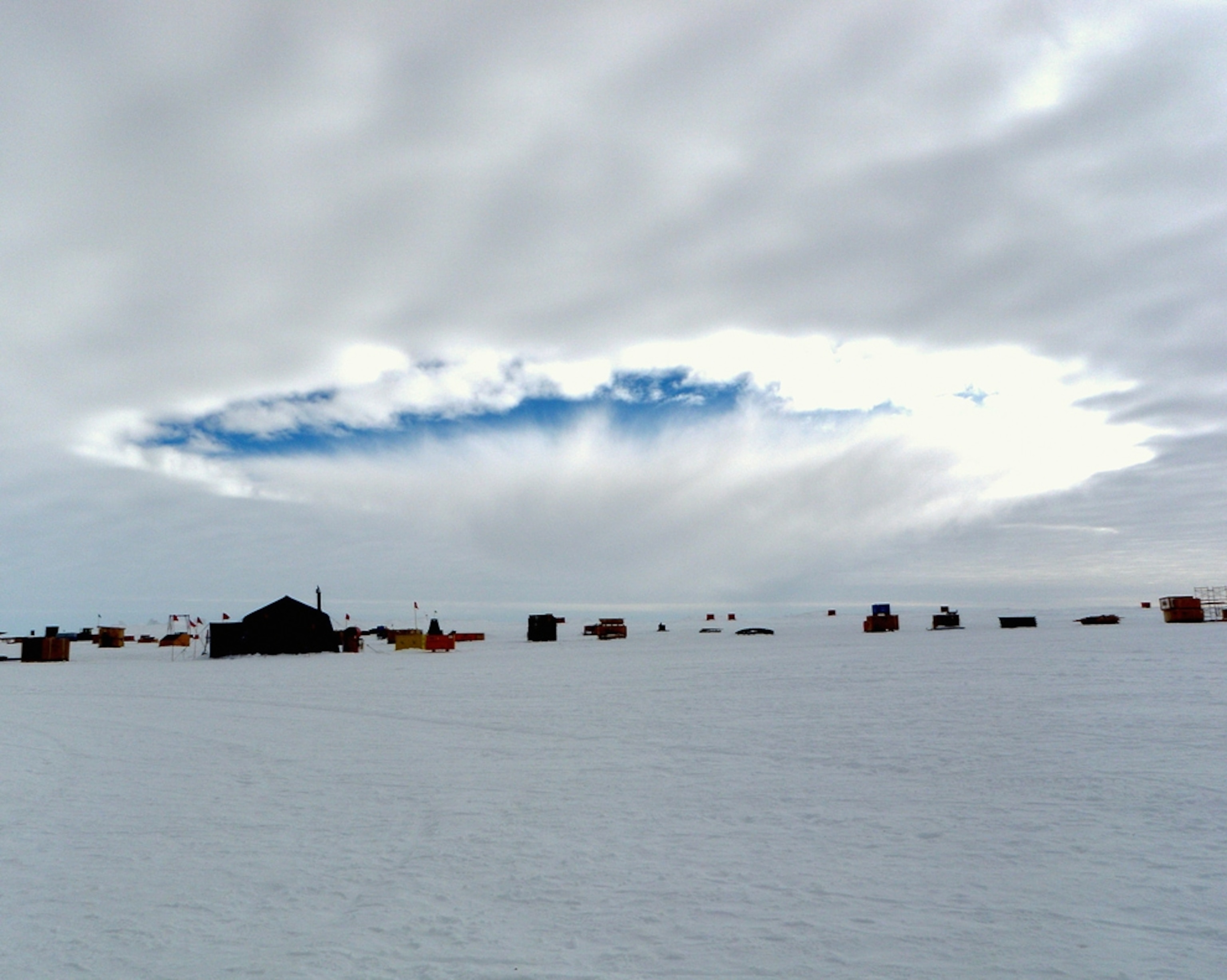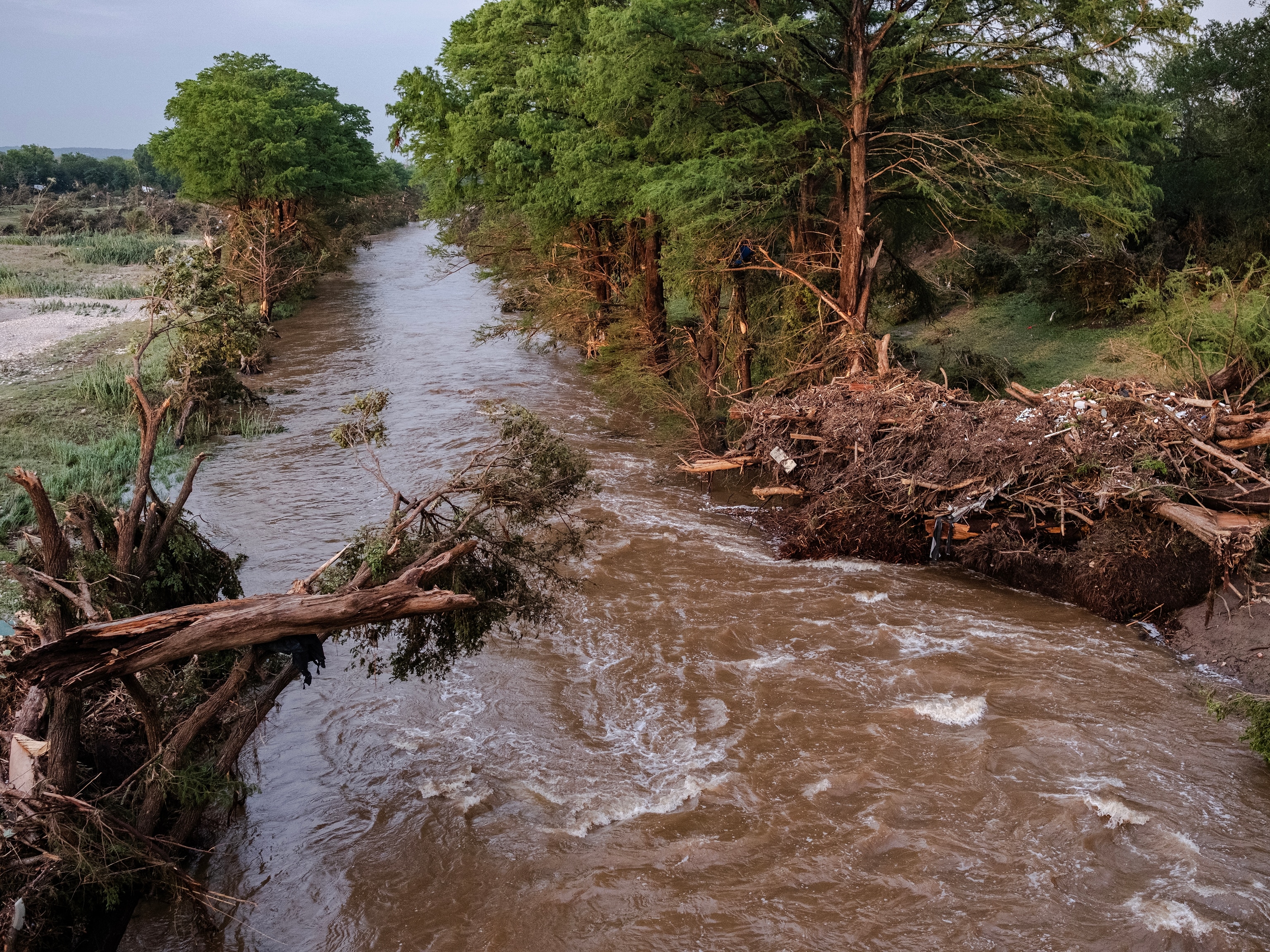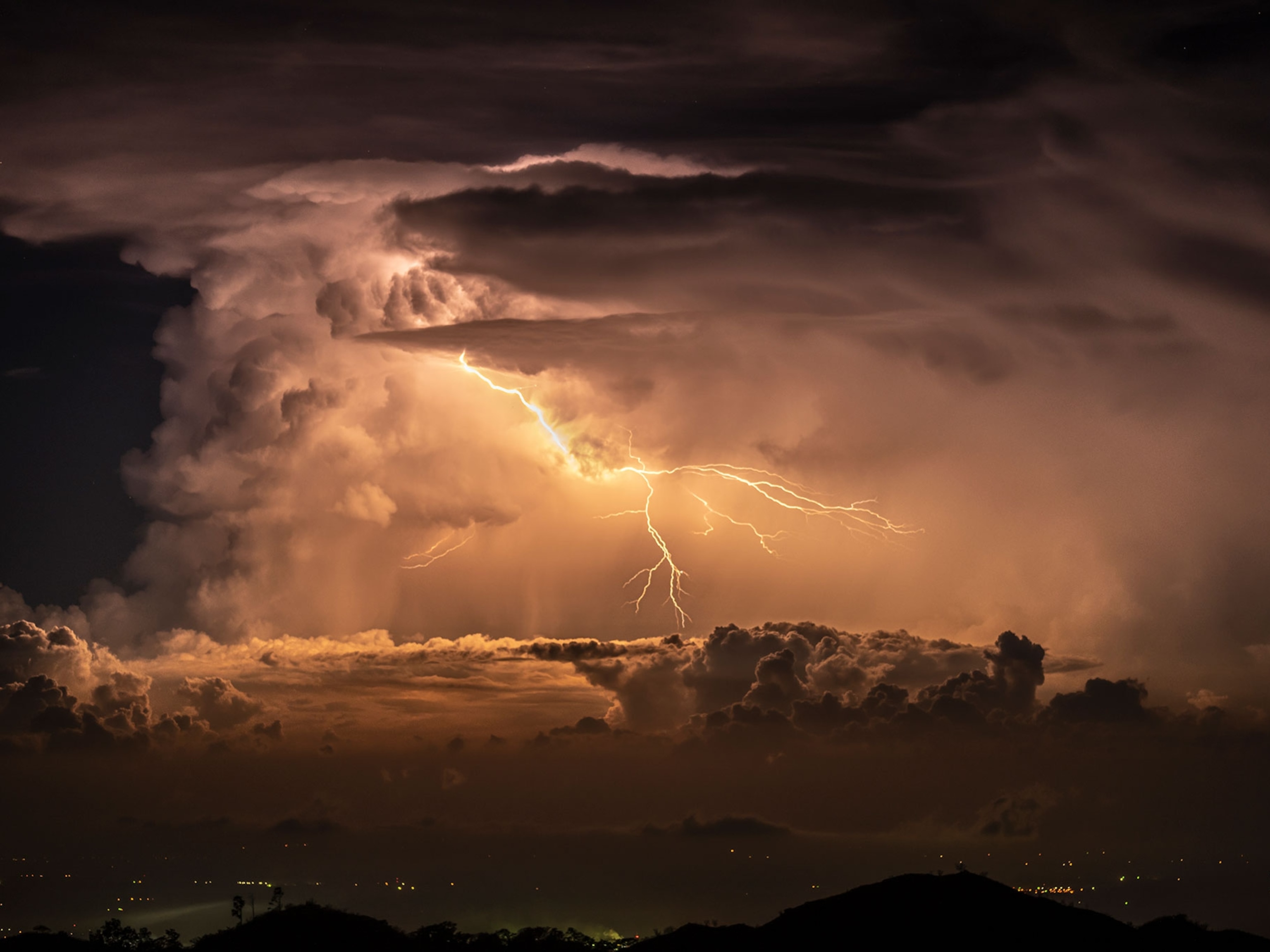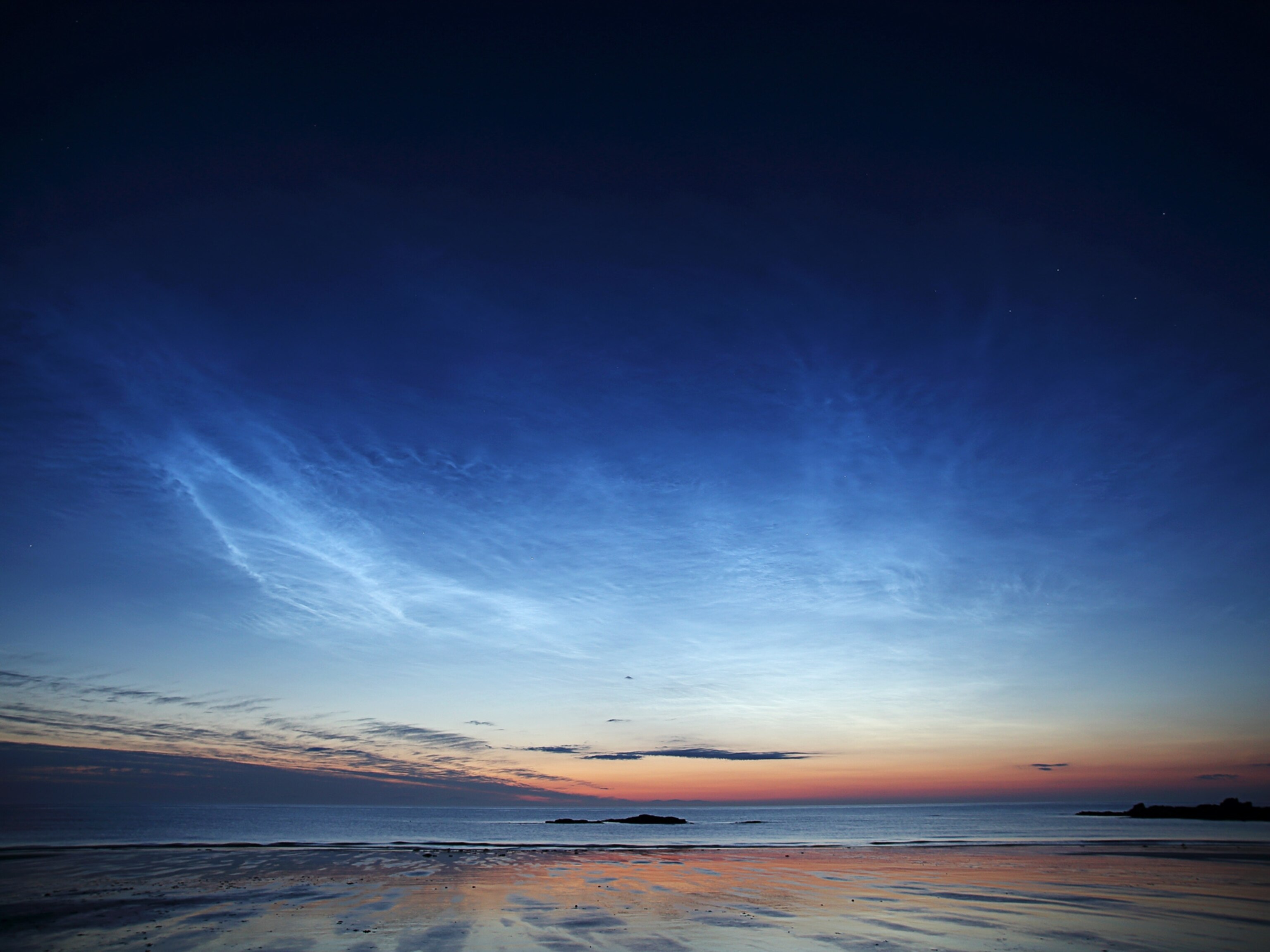
Secrets of Giant Cloud Holes Revealed
Mysterious cloud formations made by aircraft may owe their huge sizes to a little bit of heat, a new study suggests.
Mysterious holes in clouds made by aircraft may owe their huge sizes to a little bit of heat, a new study suggests.
For decades people have seen gargantuan holes form in high, thin clouds made of supercooled water—liquid droplets that are chilled below the freezing point but that don't have any particles around which ice crystals can form.
In the absense of dust, these cloud droplets can turn to ice if the water gets cooled beyond -40 degrees Fahrenheit (-40 degrees Celsius). At such chilly temperatures the water molecules slow down enough to freeze spontaneously.
Researchers previously knew that plane wings, propellers, and turbines could chill supercooled water via rapid expansion of air in their wakes—making things cold enough to force the liquid to become ice. This mechanism is thought to be what creates hole-punch clouds.
Watch an animation of satellite images showing circular and x-shape holes forming in supercooled clouds over Arkansas, Louisiana, Texas, and Oklahoma in January 2007. Video courtesy NCAR/NOAA





